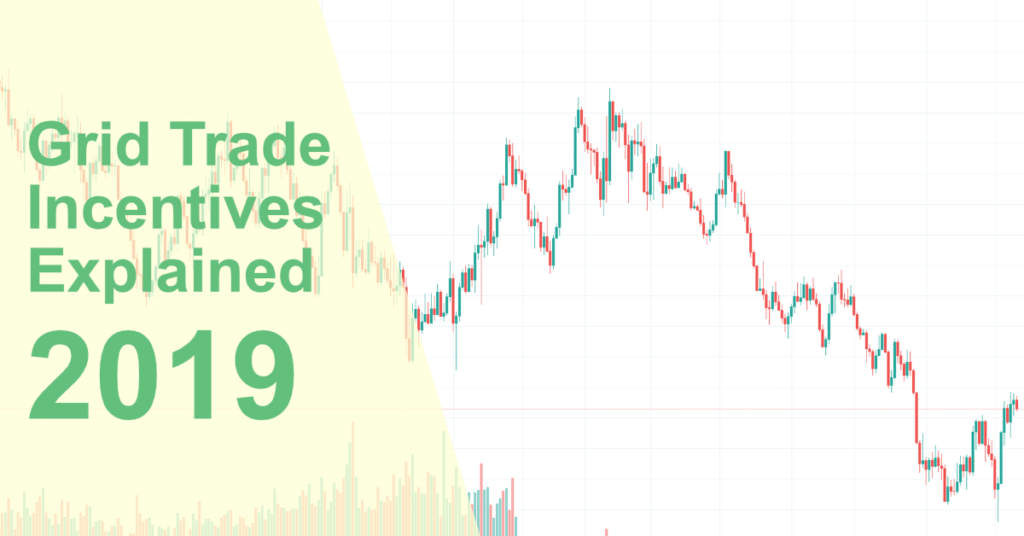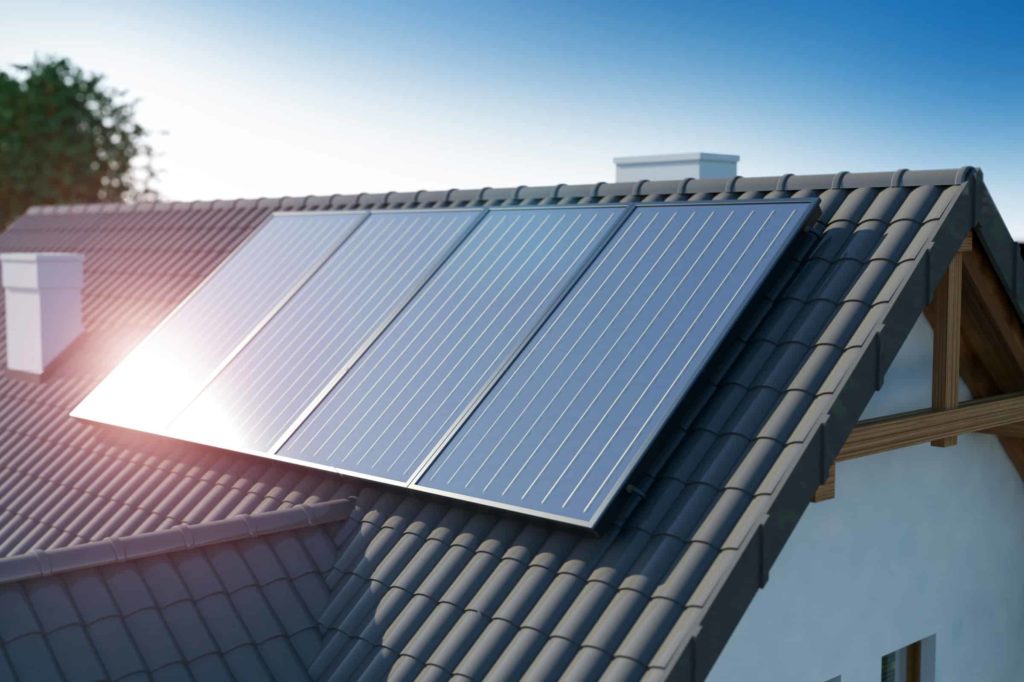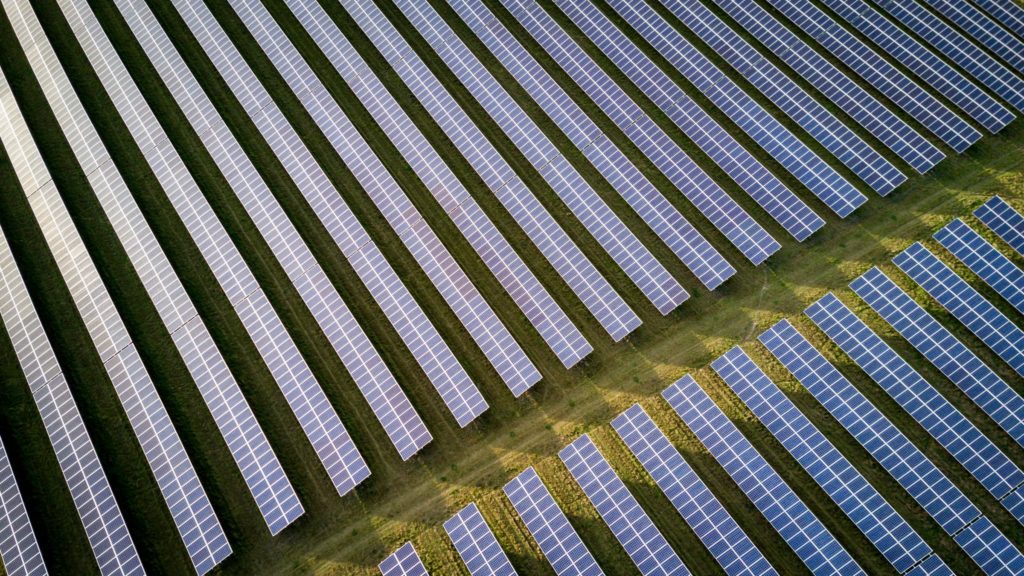
Having been announced by the Solar Trade Association in 2018. The new Solar Panel Funding Grid Trade Scheme officially launched in April 2019.
Opening the door to a world of new possibilities for homeowners and businesses throughout the UK.
Before committing to anything related to energy consumption or your finances (personal or commercial).
It is important to understand the reasons for changing your approach to solar energy.
After all, there is very little point in adopting the ideas if you don’t utilise the very best strategies.
Here’s all you need to know about the use of solar panels, for home and business properties in 2019/2020.
With a clear focus on the solar panel funding grid trade scheme.
Homeowners, Complete Our Easy Funding Checker to Find Out if You Qualify for Grants or Funding
What Is The Solar Panel Grid Trade Scheme?

The solar panel grid trade scheme is a new plan that replaces the outgoing post-Feed-in-Tariff strategy.
However, people already using the old platform (which launched in 2010) can continue to use it.
For the time being at least.
While over 9 in 10 owners of solar roof panels are thought to be happy with the general performance of their installations.
The Issue
There has long been an issue with what happens to the excess solar energy. That has been harvested by the panels.
After all, users won’t always utilise all of the energy generated from their panels.
The government stated that “small-scale low-carbon generation should not be provided to the grid for free”.
This has translated to the obligation for energy companies with over 150,000 customers to buy surplus solar, wind, and renewable energy from customers with those power-generating systems.
This forms part of the Smart Export Guarantee (SEG).
And is something each of the big six companies has to satisfy.
Under the old regime. Payments are made for exporting electricity but are capped at 50% of the electricity the system generates.
The payments under the new system are deemed to be preferential.
Although it does mean that there are no payments for generating energy alone. On the other hand, the energy generated can be used in a more effective manner.
Companies can now set their own prices, giving users even greater flexibility to find a deal that suits them.
Either way, the grid trade scheme ultimately allows consumers to export the energy that they’ve generated back to the grid.
Frankly, the reasons for doing so are plentiful.

A Deeper Look At How It Works
The use of the solar panel funding grid trade scheme relies on the use of several key components. The process of generating energy and using it through the scheme covers all of the following:
Solar panels used on the roof to generate electricity and renewable energy.
- Battery storage facilities and a solar energy hub for storing and distributing energy.
- Solar energy supply from the home as well as energy supply from the grid.
- Energy trading in which your stored energy is sold back to the grid.
- Bill crediting where the sales of energy are used to reduce your overall energy bills.
As such, there are a number of different contributing factors that will influence the performance of your systems. Choosing the right battery is a particularly important feature.
UK Standards
In addition to being manufactured to UK standards, it’s essential to find a solution that suits your solar panels and systems.
This will ensure that the best stores, trades, and swaps are delivered time and time again. While the biggest battery may feel like the natural choice, this isn’t always the right option.
Some of the most popular brands include:
- Solax Inverters (including the X1-AC), which offers efficiency levels of up to 97% as well as low maintenance needs and offers both software and hardware protection.
- Triple Power (including the battery module and master box), which boasts easy installations and can be mounted to floors or walls while offering a cycle life in excess of 6000.
- Duracell (including an energy bank), which offers 24-hour monitoring and high performances as well as scalability up to 6KwH and a continuous level of 3KwH.
The solar energy hub is another key feature of the system.
It’s influence on the performance of the battery, which is used to store energy, is monumental.
Frankly, without the right hub, the efforts put into choosing the right battery will be rendered redundant.
A good hub should be 100% autonomous, completing all storage and trades without any effort on your behalf. The best hubs will make decisions on trades every few minutes.
Ensuring that you get the full benefits of using the grid exchanges. Furthermore, Artificial Intelligence means that the systems can learn your behaviors.
To provide optimised performance in terms of storage and usage with a particular focus on peak versus off-peak consumption.
Of course, the solar panel installations will make a significant impact.
When supported by the right infrastructure inside the home, utilising solar energy to its full potential through the use of the solar panel grid trade scheme becomes far easier.
Energy will be stored and used in a far more effective manner.
Why Should Homeowners Consumers Embrace The Solar Panel Funding Grid Trade 2019?

Before making the proposed switch to solar panels and the concept of selling energy back to the grid, homeowners need to be aware of the incentives for doing it.
After all, adding solar panels is a serious investment of money while setting up the process can take time – albeit less time than you probably imagine.
There are many reasons why 2020 is the perfect time for homeowners to use the grid trade schemes. They include:
Suitability
Convenience and time-consumption are two of the most significant elements that you’ll need to consider before making any investment that impacts your daily home life.
Converting to using solar energy for an energy efficient home is one of the best solutions on the market.
New systems including batteries and smarter hubs can be used alongside existing solar roof panels and infrastructure, which makes the upgrade particularly easy for homeowners that already use solar energy.
Meanwhile, new installations can be completed in a quicker and more affordable manner than ever before.
Whether looking to use solar energy for the first time or improve the current situation, the introduction of the solar energy panel grid trades has increased the possibilities with dramatic outcomes.
The Financial Savings
Financial savings are a key selling point for solar panels in all aspects.
However, the addition of the grid trade scheme only further incentivises users to think about solar panels due to the ongoing savings.
It is shown that homeowners often use just 27% of the solar energy that their homes produce. Over 70% is currently going to waste.
Selling energy back to the grid is the ideal way to make better usage of the generated electricity and energy.
Before selling energy back to the grid, though, improving the rate of self-consumption can have a telling influence. Essentially, the sun is out when you don’t need to use much electricity.
Therefore, you’re not gaining the benefit of it.
The use of a smart battery will store the energy that has been generated through the day before being used in the evenings and mornings (when your usage is at a high and solar generation is at a low).
Fast Energy
Moreover, fast reacting energy means that your home can instantly export the energy. This makes it the fastest operating power-plant available.
Given that balancing frequencies to satisfy the amount of renewables is increasingly important, your energy becomes more valuable. This is one of the reasons you can get a better price on energy too.
The rates of sale prices can be influenced by a number of factors relating to the wholesale costs of energy at any given moment.
Contributing attributes include the time of day, wind generation, weather conditions, and the total amount of generation.
Thanks to these huge fluctuations in prices between peak and off-peak moments throughout the day, storing energy via a battery and sell it back to the grid when it is at its optimal price.
This can be done automatically, which allows you to capitalise on the financial savings for even greater rewards.
This additional source of revenue, which can be offset against your energy bills can seriously boost the efficiency of your home, allowing you to run it at a smaller monthly cost.
The great thing about energy regeneration is that you’ll still see those rewards even when you are away.
Off-peak energy savings is another key aspect to consider. While the prices that you sell energy at can fluctuate between peak and off-peak hours, so will the buying price.
By using the stored energy in the peak periods, you avoid the need to use power from the grid at these times. Instead, your energy will be used during off-peak times when the costs are far smaller.
So, even when you do consume energy from the grid, you’ll be getting it at a far cheaper rate.
The concept of selling back to the grid will only generate a relatively small saving over the course of a year (the UK average is forecast to be around £80).
However, when added with the use of fast-reacting energy and – crucially – the idea of using more energy in your own home, the savings can jump to an average of almost £400 per annum.
Of course, those with high performing solar panels and equipment may see even greater rewards.
The Financial Investment

As well as the ongoing savings made by claiming back money through energy sales, the addition of solar panel funding can prove to be very beneficial for homeowners.
While the initial outlay is relatively high, the Return on Investment levels are very strong.
Increasing the value of your property in this manner can be very rewarding while it also increases the appeal of the home to potential buyers.
This is something that is only set to grow over the coming years as greener technologies and the grid trade scheme gain even more attention.
Even for homeowners that aren’t thinking about selling anytime soon, this incentive should not be ignored.
The Environmental Impact
The adoption of solar energy by homeowners isn’t only the future in terms of saving money. It’s also the future for saving the planet. Social and cultural demands are greater than ever, and we all need to take responsibility.
Home is the perfect place to start incorporating positive changes, and solar energy grid exchanges are the ideal solution.
Reducing the personal need for non-renewable energy is an incredible starting point, but the addition of giving sustainable energy from the solar power back to the grid makes it even greater still.
It seems a little redundant to drive a hybrid car or EV if you can’t even reduce your energy consumption around the home.
Anyone seeking an eco-friendly lifestyle will want to embrace the solar panel grid trade scheme ASAP.
The use of solar panel trade schemes provides a platform that will encourage further improvements over the coming years.
This could include the addition of EV charging points, social energy hubs, and efficient heat pumps.
On a separate note, the use of an App offers 24/7 access to key details about energy consumption and bills.
Aside from the convenience, the paperless approach is another step towards leading a greener life.
The Solar Panel Funding Grid Trade Scheme: Success That’s Built To Last

It’s one thing to generate short-term benefits, but you’ll also want to know whether the solar panel trade scheme can actually support you in the long run. The short answer is ‘yes’.
Using solar energy panels, smart batteries, and smart meters will actually generate even greater savings over time. This is ultimately due to inflation, meaning that the impact of your energy savings will be even greater.
The Office for National Statistics figures show an annual increase of 6.92% on the average user’s energy bill. This essentially means that £1 of electricity today will cost £2.73 in 15 years time, which is quite a scary thought.
In addition to inflation, other reasons for the increase include the increased costs of running old networks along with wholesale energy prices.
However, the fact that the solar panel grid scheme allows homeowners to reduce their usage of electricity from the gird while also earning money back from the exchanges will help combat the growing costs.
The average home could see savings of nearly £450 per year by year 5, increasing to over £675 by year 15. Even with living costs and salaries expected to rise, those savings will be hugely significant.
Over a 15-year period, this could amount to average household savings of over £7,700 while the annual savings will only move in one direction following the completion of this era.
If that doesn’t underline the long-term benefits of using solar energy and the grid trade scheme for sustained savings, nothing will.
A Look At Tariffs
Tariff selection is a crucial step of unlocking the full potential of any service. When considering electricity and power supplies, you already know that there are several companies on the market.
However, you probably assume that the pylons and infrastructure are owned by the UK grid network. This is factually inaccurate.
When using energy in your home, electricity travels through a network of national infrastructure but also travels through local cables, pylons, and items.
The country is essentially split into eight territories, which are controlled by six different District Network Operators (DNOs). They are:
- Scottish & Southern Electricity Networks (two territories),
- SP Energy Networks (two territories),
- Northern Power Grid,
- Electricity Northwest,
- UK Power Networks,
- Western Power Distribution.
So, the manner in which electricity reaches your home is actually very dependent on your geographic location. Some of those territories are broken down into smaller regions.
There are, as far as electricity supply is concerned, subsequently a total of 14 regions of the UK.
Each of those 14 District Network Operators sets its own pricing on electricity, charged per KwH.
However, the prices will change depending on the time of day, with peak hours costing ore due to the increased usage and demands across the regional and national network.
The Full List
The full list of 14 is as follows; SSEN (SHEPD),SPEN (Scotland), NPG (Yorkshire), NPG (Northeast), ENW, SPEN (Manweb), SSEN (SEPD), UKPN (Eastern), UKPN (London), UKPN (South Eastern), WPD (East Midlands), WPD (West Midlands), WPD (South Wales), and WPD (South West).
All 14 DNOs use a green, amber, and red traffic light system to define how much electricity will cost at any given time. However, they can use very different pricing strategies.
For example, UKPN (Eastern) has a very low during the green off-peak hours but a very high peak rate.
Conversely, NPG (Yorkshire) has one of the highest green rates but the lowest red rate. While you can’t choose the DNO, understanding the situation will help make the best decision on batteries, hubs, and trades.
Breaking down your usage through a smart metre provides clear insight while using the stored solar power at the right times will allow you to capitalise on the best aspects of the DNO while bypassing the potentially problematic issues.
It is also worth noting the different energy providers. Most importantly, you’ll need one of those with over 150,000 customers as they are the ones that actively facilitate the network grid exchanges.
When social energy is used to maximise energy regeneration and make trades in a way that focuses on getting the most out of the specific tariff, the savings (financially and for the planet) are incredible.
What About Business Owners & The Solar Panel Grid Trade Scheme?

While the scheme is primarily designed to help homeowners, businesses can also see plenty of benefits from embracing the program.
In addition to many of the ideas mentioned above for residential customers using solar panels on their homes, businesses also gain the benefits of reducing their carbon footprint and gaining an improved brand image.
Given the importance placed on eco-friendly activities by consumers, this can translate to increased sales and profits for the business too.
Businesses will need to consider a number of external factors including how the sales and trades impact their accounts.
Meanwhile, the fact that commercial premises have far greater needs means that solar energy is more likely to be stored for on-site usage through busy periods of the day.
Rather than selling energy back to the grid.
Still, businesses can use solar energy to great effect.
How Can You Get Started With Using The Grid Trade Scheme?
After researching the options to find the right supplier and the right equipment for your home solar panel setup, a number of steps must be completed to get the process up and running.
Generally speaking, the following process will be used:
- The installer sales contract is signed.
- The aggregator contract is signed.
- Introductory calls are made.
- Battery, solar energy hubs, and other equipment installations.
- Energy supplies are switched (can take up to 21 days).
- Smart meter equipment is installed.
The first step, then, is to book an appointment with an expert to discuss the benefits in further detail. Following this, the many benefits can start to be felt in next to no time.
Conclusion
The solar panel funding grid trade incentive signals the start of a new chapter in solar energy technology and the benefits it brings for users that have invested in the systems.
Providing greater motivation to adopt the tech features than ever before.
Selling excess energy back to the grid won’t make homeowners millionaires, but when this additional stream of revenue is combined with the reduced energy bills, the investment of roof solar panels soon pay for themselves.
Better still, this sustainable approach to energy consumption is great news for the environment as well as the country’s energy usage as a whole.
There has never been a better time to finally embrace solar panels for the home or business. With the right equipment, tariff, and strategy in place, it can be one of the greatest property upgrades of all.
For the sake of function, finances, and peace of mind, choosing a smarter approach to solar energy is vital.
